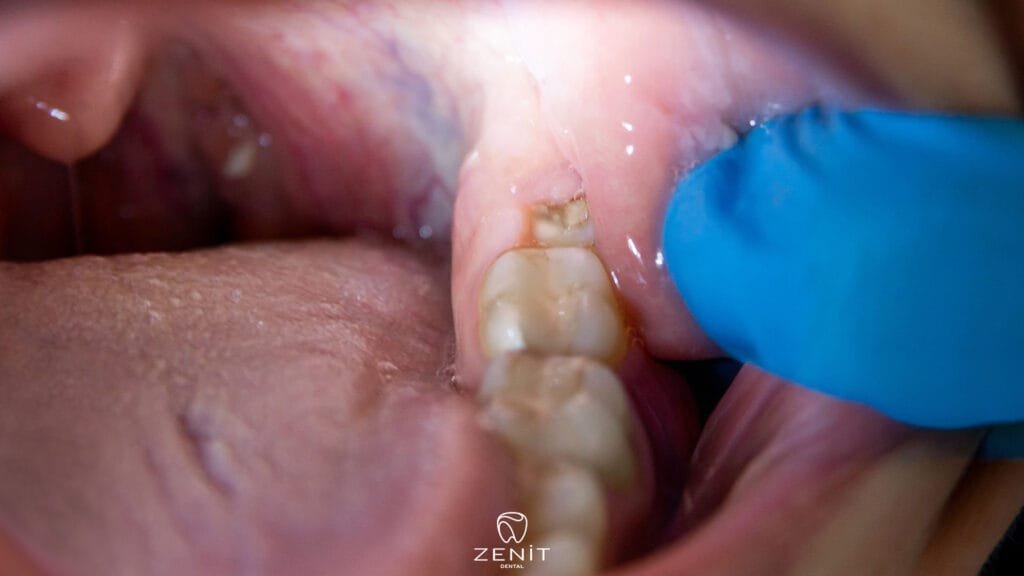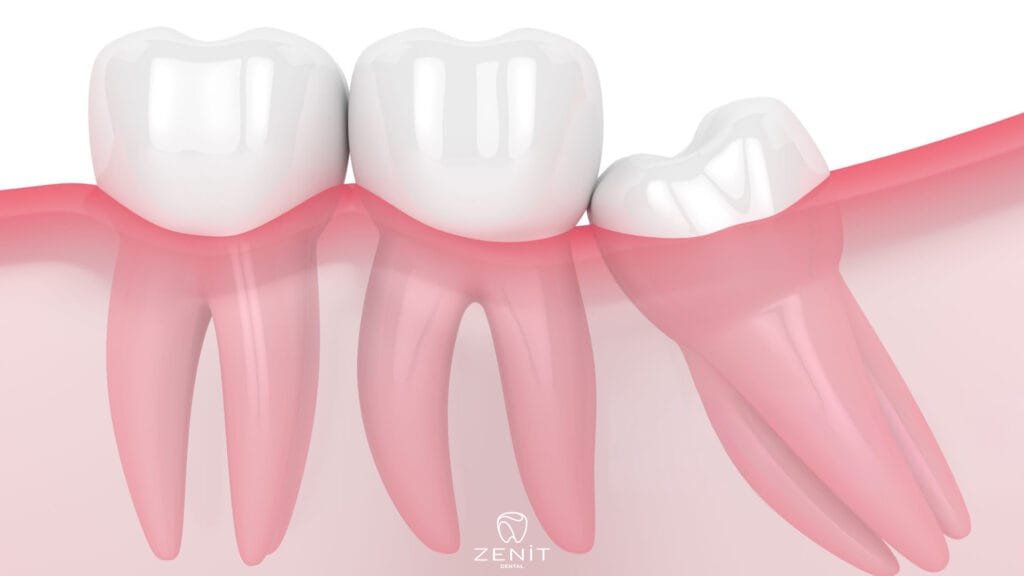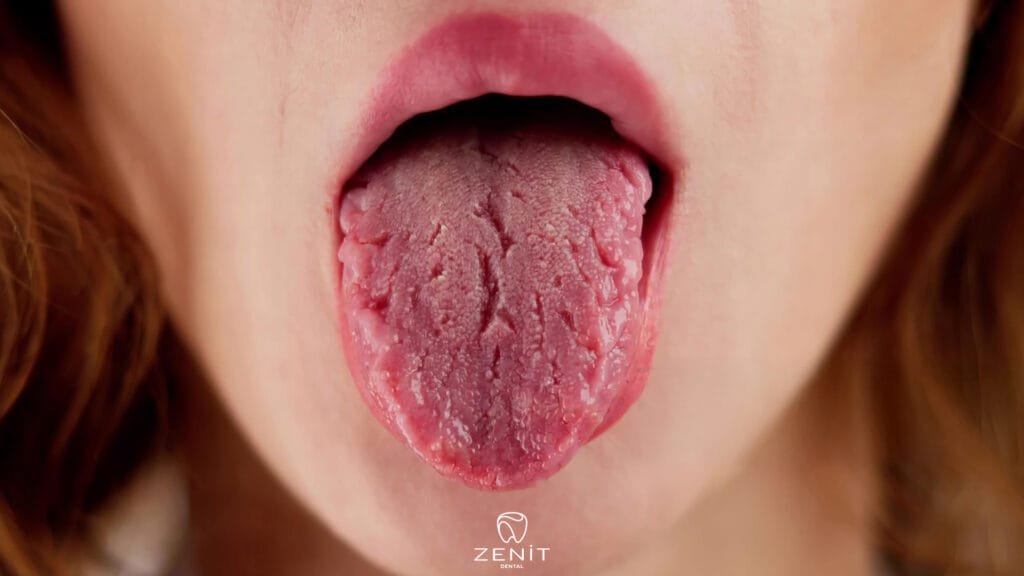Wisdom Tooth Pain
At some point in life, a visitor arrives at our door when we least expect it: wisdom teeth. They usually begin to appear silently between the ages of 17 and 25, those years when youth enters adulthood. These teeth, in fact, are the final molars at the very back of our mouths, absent in childhood but suddenly emerging on the threshold of adulthood. The name “wisdom teeth” comes from our age, but the trouble it brings is often measured not by age, but by patience.
For some, this process passes unnoticed; the tooth quietly finds its way into place, with no pain or swelling felt. But unfortunately, not everyone is so lucky. For some, the tooth seems to transform all its effort to emerge into a pain that radiates to the jaw, gums, and sometimes even the head. Throbbing throughout the day, pressure while eating, even sleepless nights… Then, suddenly, this little tooth has begun to affect even your daily life.
In fact, wisdom teeth seem like the final complements nature has added to our oral structure. However, because modern humans have smaller jaws than our ancestors, there’s often no room for these teeth. This is why a condition called an “impacted tooth” occurs: a tooth trying to emerge but unable to find space, it becomes trapped beneath the gum. This is the primary cause of pain, inflammation, and sometimes infection.
Wisdom tooth pain isn’t just a physical discomfort. It’s often a symbol of the transition to adulthood, growth, and physical changes. Many people struggle with this pain during this period, both at work, school, and while taking new steps in life.
What are Wisdom Teeth?
We all vaguely remember the teething period of childhood: baby teeth, then permanent teeth, and after a while, everything seems to be in place. But years later, just as we’re about to “grow up,” the mouth begins to move again. That’s when the unsung heroes (or sometimes the real troublemakers) enter the picture: wisdom teeth.

We normally have 32 teeth in our mouths. The last four of these—the molars located at the very back—are known as “wisdom teeth.” Medically, they are known as “third molars,” or “wisdom teeth.” This name isn’t given for nothing, as these teeth generally begin to erupt between the ages of 17 and 25, when we begin to mature. In a sense, they symbolize the transition to the “age of wisdom.”
However, things aren’t always so smooth. As a result of human evolution, our jaw structure has shrunk over time, while the number of teeth has remained the same. While our ancestors ate harder, harder-to-chew foods, we today eat softer foods. Consequently, our jaws struggle to accommodate these four extra teeth. This is why wisdom teeth often experience difficulties when they emerge: the space for them to erupt is narrow, the space is cramped, and they are too close to neighboring teeth.
In some people, wisdom teeth emerge smoothly, and because the jaw structure is adequate, no pain or swelling is felt. However, the situation is different for many people. The tooth begins to grow at an angle within the jawbone, or only partially emerges from the gum; this is called a partially impacted tooth. If the tooth never emerges, remaining completely beneath the gum and bone, it is called an impacted tooth.
This condition isn’t just a problem with the tooth itself; it also affects the surrounding teeth. An impacted wisdom tooth can put pressure on the adjacent tooth, causing both jaw pain and misalignment. Furthermore, this compression beneath the gum creates a favorable environment for bacteria to accumulate.
Some people compare this pain to an “earache” or a “stiff jaw.” Sometimes, even pressure on one side of the head can be a sign that the wisdom tooth is trying to erupt. In other words, this small tooth can make its impact felt not only in the mouth but throughout the entire face.
Wisdom teeth are actually a legacy of nature. They were once necessary for our ancestors to grind tough plants, raw meat, and roots. But today, thanks to evolving eating habits, we no longer need to chew so forcefully. Therefore, wisdom teeth are no longer a necessity, but rather a “past habit” that the body still maintains.

What Causes Wisdom Tooth Pain?
Wisdom tooth pain is usually caused by various factors, such as narrow jaw structure, the direction of tooth emergence, or infection. One of the most common problems is insufficient space in the jaw for these teeth. When the jawbone is small, the wisdom tooth cannot fully emerge and becomes trapped under the gum, pressing on the surrounding tissues, causing a deep, throbbing pain. In some cases, the tooth does not remain completely impacted but rather partially erupts, creating a “pocket” in the gum. When food debris and bacteria fill this space, an inflammation called pericoronitis develops.
The gums become red and swollen, and even opening and closing the mouth can become difficult. Another common cause is a tooth emerging in the wrong direction, meaning at an angle. A sideways tooth can put pressure on the adjacent tooth, causing intense pain felt both in the roots and in the jaw. Although rare, some people can develop cysts around the impacted tooth; these cysts can weaken the jawbone, damage the roots of adjacent teeth, and cause significant discomfort. In short, wisdom tooth pain is a complex process that often affects the balance of not just one tooth but the entire oral cavity.
Is Wisdom Tooth Extraction Necessary?
Whether wisdom teeth need to be extracted depends on the tooth’s location and its condition within the mouth. If the tooth has erupted properly, contributes to chewing, and doesn’t cause any pain, swelling, or pressure, then extraction isn’t necessary. However, if the tooth is crooked, impacted, or in a position that could harm surrounding teeth, extraction is generally the most effective and permanent solution. This can cause not only pain but also gum infections, jaw pain, and misalignment in the future.
Wisdom tooth extraction isn’t as scary as it might seem. It’s usually performed under local anesthesia, so the patient feels no pain during the procedure. Simple extractions can be completed in a few minutes. However, if the tooth is impacted or located beneath the bone, surgical extraction may be necessary. In this case, the dentist will remove the tooth through a small incision and clean the area.
It’s completely normal to experience mild swelling, soreness, or a feeling of tightness in the jaw after the procedure. These symptoms usually subside within a few days. Applying cold compresses, eating soft foods, and avoiding smoking and hot drinks in the first few days will speed up the healing process. Furthermore, taking antibiotics or painkillers prescribed by your doctor regularly will make recovery much more comfortable.

How to Relieve Wisdom Tooth Pain?
Wisdom tooth pain can often become excruciating, but it’s possible to relieve it with the right methods. First and foremost, it’s important to understand that, regardless of the cause of the pain, temporary solutions only provide relief; a permanent solution requires a dental visit. If the tooth is impacted or infected, extraction or surgery may be necessary.
Some simple home remedies can provide some relief. Gargling with warm salt water several times a day both reduces inflammation and clears bacteria from the area. Applying a cold compress is also quite effective, especially if there’s swelling and throbbing. Pain relievers sold over the counter can provide temporary relief; however, these medications should only be used under a doctor’s advice.
In some cases, bacteria accumulated around wisdom teeth can cause bad breath and swollen gums. Therefore, brushing and flossing become even more important during this period. It’s important to use a gentle toothbrush, especially to avoid damaging the affected area. Vigorous brushing can irritate the infected area and increase pain.
Eating habits can also affect the course of the pain. Avoiding very hot, very cold, or hard foods is important to avoid straining the aching tooth. Warm soups, soft foods, and drinking plenty of water are more appropriate during this time. Additionally, habits that delay healing, such as smoking and alcohol, should be avoided.
However, if the pain persists for more than a few days, the gums become increasingly swollen, or you experience limited jaw movement, this is no longer a simple toothache. You should see a dentist as soon as possible. Sometimes, an infection accumulated under the gums can spread and lead to serious health problems if left untreated.




